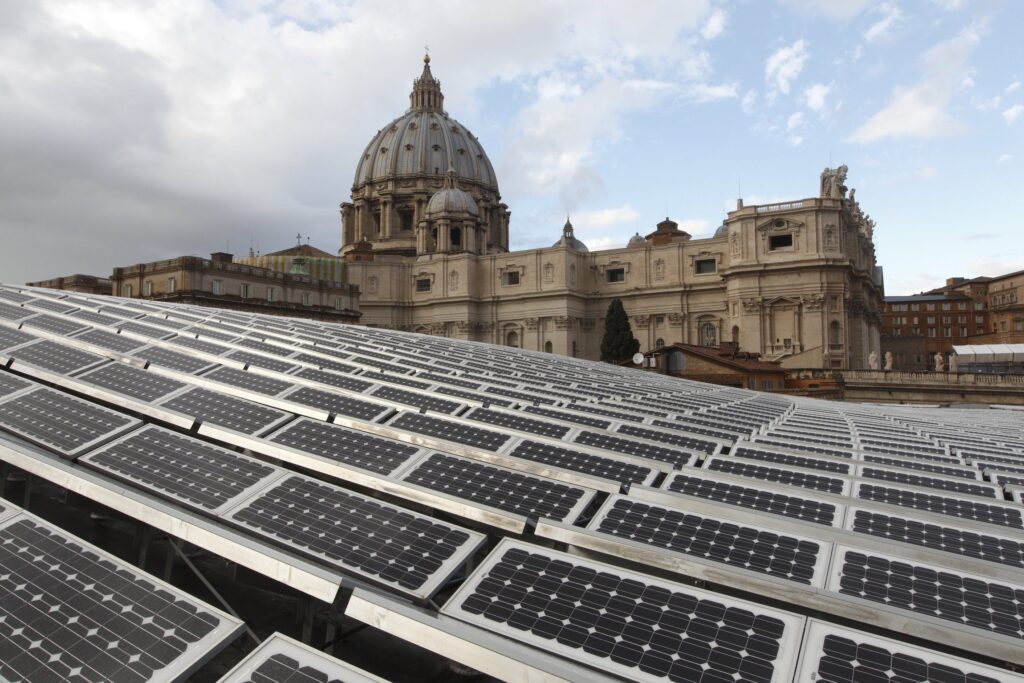
Earth Day: Energy Department Leading the Archdiocese’s Green Transformation
By: Steven Schwankert
The Archdiocese of New York is one of the few dioceses in the United States to have an energy department

While having church buildings that have endured for a century or more builds communities, it isn’t always advantageous for saving energy or installing state-of-the-art energy efficiency technology.
The archdiocese’s energy department was established by Cardinal Timothy Dolan in 2015, after the publication of Pope Francis’s encyclical letter Laudato Si’ on caring for our common home, planet earth.
The Archdiocese of New York is one of the few dioceses in the United States to have an energy department.
“One of the first things we do for parishes, schools, and other church buildings is an energy audit, to see how it is using energy and how it can be used more efficiently,” said Martin Susz, the archdiocese’s director of energy management.
Utility costs — for heating and air conditioning, electricity, and water — are usually a parish’s second or third-highest expense, following salaries and insurance, Susz said.
Based on findings from the energy audits, a significant change that the energy department made around the archdiocese was a switch from incandescent light to light-emitting diode lighting, better known as LED. LEDs use as much as 90 percent less energy and last up to 25 times longer, according to the U.S. Department of Energy’s EnergyStar website.
Other simple changes include caulking or sealing drafty windows and doors, and management of temperature settings, especially when spaces or buildings are not in use or occupied.
Also, because New York State has a deregulated energy marketplace, with energy service companies competing to sell electricity and natural gas, the archdiocese was able to bundle some of its larger properties and negotiate long-term, fixed-rate contracts, Susz estimates saved the archdiocese millions of dollars.
New York State incentivizes more energy-efficient practices by making funds available for upgrades, through the New York State Energy Research and Development Authority (NYSERDA). Utility companies such as Con Edison (Con Ed) also offer incentives for improved energy equipment and use. Susz estimated that more than 300 church-owned buildings have been upgraded to date.
Perhaps the best example of the greening of the Archdiocese of New York is its centerpiece house of worship, St. Patrick’s Cathedral (article may require a subscription). Completed in 2017, the cathedral’s heating and air conditioning systems were converted to using geothermal channels through a series of 10 wells dug throughout its foundation, some more than 2,000 feet deep. Because ground temperature is more constant than that of air, the geothermal system uses less energy to regulate the environment inside the cathedral. U.S. Deputy Secretary of Energy David Turk toured St. Patrick’s Cathedral and its geothermal plant in March 2023.
While solar power appears to be an attractive option, not every property is suitable for its installation. Aside from having long, daily sun exposure and not being shaded, the roofs of many older buildings cannot support solar panels, Susz said, along with the wiring of buildings being an impediment. Solar panels often require a significant upfront investment, but will pay off in the long run, he said.
So far, solar has been deployed at three high schools and six elementary schools, with one more in the works, Susz said, along with a number of parishes, including St. Teresa of the Infant Jesus on Staten Island and the Church of the Transfiguration in Tarrytown.
The archdiocese department of energy also offers free energy efficiency training to all Archdiocese of New York and Trustees of St. Patrick’s Cathedral employees and contractors. For more information on the training, visit the department of energy’s website.


